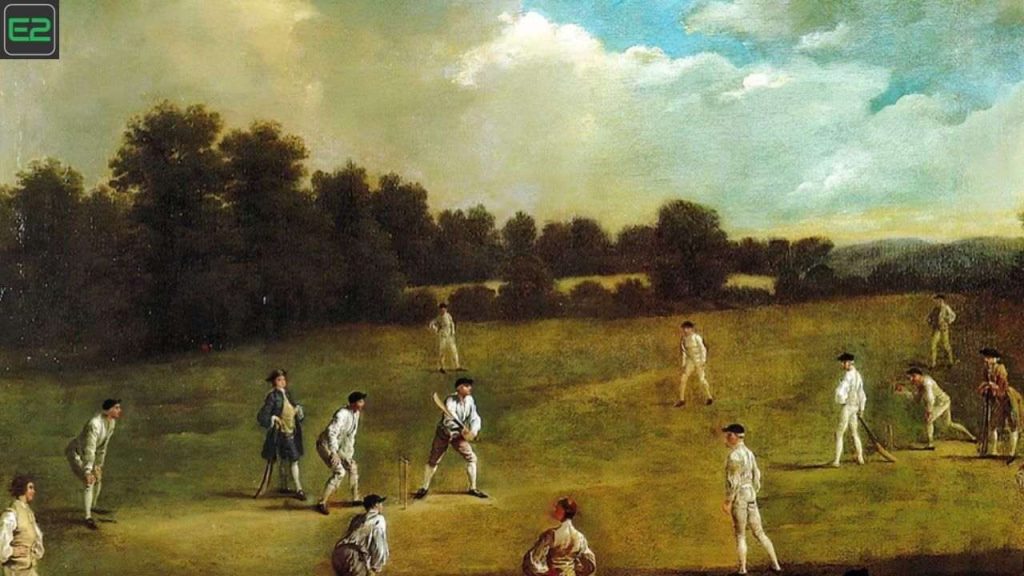Cricket Bat: The history of the cricket bat is a fascinating, microcosmic tale of the very evolution of the game itself, from the hockey stick-like beginnings to the brutal, beautifully-sculpted profiles of modern day. In reading this comprehensive account of cricket bat history, you will learn all you need to know about cricket bats through the years. We’ll also tell you about the personal preferences of famous characters, such as Jack Hobbs and Don Bradman. Naturally, cricket bat history started at the birth of the game, and has remained the batsman’s key instrument of expression, yet its shape, weight, power and quality of materials have changed throughout its life span.
Table of Contents
Early Cricket Bats

As bowlers used to bowl underarm, the first cricket bat resembled a hockey stick – a wise choice given the ball would arrive at the batsman very low to the ground. 1624 was the first time that a cricket bat was mentioned in print, in somewhat tragic circumstances. An inquest was carried out after a fielder was killed by a batsman, with the inference being that the batsman hit the fielder with his bat in order to prevent him catching the ball, which may well have been the instigator of what is now Law 37 – Obstructing the Field.
“Length bowling” was legalised in the 1770’s, which was still delivered via an underarm action but allowed bowlers to “loop” the ball in the air a bit more. The cricket bat became roughly parallel with a maximum width of 4.25″ – a dimension that has resisted the test of time. They were extremely heavy, with the “sweet spot” at the bottom of the blade. If you were to pick one up today, you’d probably describe it as “bottom heavy”. Batting technique began to adopt a more vertical swing, rather than the traditional horizontal, “sweeping” style. At this time, batting was based around power and strength, rather than technical flair and solidity.
Cricket Bat Tightening of the Laws

With no real laws or code of honour devised until the 19th century by Marylebone Cricket Club, initially there were no restrictions on what size or shape the cricket bat needed to be. One clever clogs from Ryegate marched out to bat against Hambledon in 1771 with a cricket bat the width of the stumps. Deemed unsportsmanlike, the great Hambledon club’s recommendation that the cricket bat be officially limited to a maximum of four and a quarter inches in width was quickly accepted nation-wide.
In the 1820’s, round-arm bowling came into force. This action produced a little more bounce, meaning the cricket bat had to adapt. It became a lot lighter with a higher “swell”, allowing for great playability and freedom of movement. Around this time, all cricket bats were one piece willow. Greater bowling speeds inflicted increased shock and a higher volume of breakages, which prompted bat-makers to “splice” handles into cricket bats, which were made from solid willow or ash.
In 1835, the length of a cricket bat was restricted to 38″, which is still the same today. Five years later, there was the first recorded use of a “spring” being inserted into the handles of the cricket bat, initially made from whalebone and later India rubber. In 1853, Nottinghamshire cricketer Thomas Nixon introduced the use of cane in cricket bat handles. In 1864, over- arm bowling was legalised, which brought about further lightening and more refined shaping of the blade to allow for a higher degree of playability and freedom, while handles became intricate constructions. The modern-day look of the cricket bat came into play during the 1870’s.
Cricket bat materials have been constantly experimented with through the years. Since the early 1800s, cricket bats have been made from English willow – a.k.a. Salix Alba Caerulea. English willow is highly resilient to the impact of a cricket ball, marrying toughness with lightness. Early cricket bats made from English willow could weigh in at five pounds, and were constructed from the heartwood of the tree – a very dense material which gives vintage cricket bats a darker colour than contemporary cricket bats.
Cricket Bat Lighter & Whiter

Cricket Bat: In 1890, English cricket bat manufacturer, C.C. Bussey, started using the sapwood of the tree instead, and found that it was far lighter and more aesthetically appealing to consumers. ‘White’ English willow cricket bats were a lot lighter and became the norm during the “Golden Age” of batting, with A-list cricketers like Kumar Ranjitsinhji and Victor Trumper mastering these lighter blades. Cricket bats tended to be very slim-line with a relatively straight profile.
The “swell” tended to be positioned fairly high up the blade. A “feather-light” pick-up allowed increased playability and technical sophistication, as focus shifted from power to touch. The actual length of the entire cricket bat was also smaller than today’s, with the handle being quite short, and it typically weighed 2lb to 2lb 4oz. Leg-glances and glides, made famous by Ranji, and other “wristy” or face-angling shots like the late cut and square drive, began to rise to prominence, allowed in part by light cricket bats.
By the 1920s, batting greats Jack Hobbs, Don Bradman and Wally Hammond used a bat of around 2 lb 2oz, but others did re-trial the use of the heavy cricket bat, such as Bill Ponsford. Run-rates were nowhere near as high as they are today, with bowler-friendly pitches and the introduction of both five-day Test matches and timeless Tests doing very little to stimulate quick run-scoring. Survival was the name of the game for batsmen of this era.
Swinging The Cricket Bat

Cricket Bat: The actual construction and complexion of cricket bats did not change a great deal between the 1890s and the 1960s. By the “Swinging Sixties”, some players again experimented with heavy cricket bats; Graeme Pollock and Clive Lloyd both used blades that exceeded three pounds in weight. Cuts and hooks were not easy to deploy, but the six-hitting potential increased significantly.
Inspired by popular golf putters with perimeter weighting in the late 1950s, Gray Nicolls used similar concepts in their ‘Super Scoop’ cricket bat, with the redistribution of weight from the middle to the edge allowing for an increased hitting zone of the cricket bat. Bat-makers have continued to refine their art in the contemporary game, with a plethora of sophisticated bat shaping and power distribution techniques. By pressing the timber less, cricket bats can be made much heavier whilst still retaining a light feel and pick-up. But there is a downside; cricket bats are far less durable that they once were. Cricket bats are made to perform; built for a good time and not a long time.
Cricket Bat History: In Conclusion

Cricket bat history tells us a lot about the modification of the game itself and its players. The edges are a lot thicker and the middle of the cricket bat is chunkier and a lot lower in the blade. With that said, high swells are still available for those that play on bouncy pitches, like those found in Australia. The use of ramp shots, flicks and scoops in T20 cricket can still be aided by a higher sweet shot or elongated swell. More attention is paid to a cricket bat’s ‘bow’ shape, in contrast to many of the straight blades of the past.
You will have fun playing exciting games on here: E2Bet
Here Are Some Helpful Tips:













